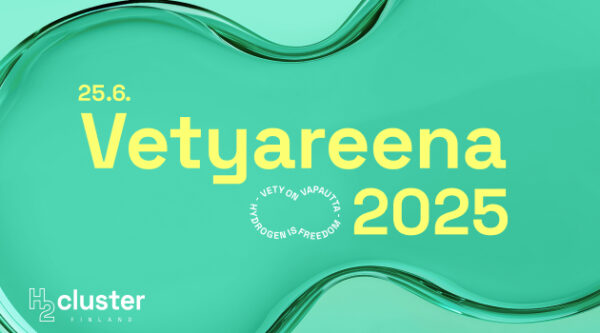St1 to produce renewable synthetic fuels in Finland – methanol or methane
The energy company St1 is planning its first Finland-based plant for synthetic fuels. For raw material, it will build a hydrogen plant and secure the supply of carbon dioxide from the neighbouring cement factory. It’s still undecided whether the final product will be methanol or methane.
Hydrogen project article series introduces the projects and perspectives of H2Cluster Finland member companies.
St1 develops, refines and distributes liquid fuels and biogas. The company is known as an active developer of renewable energy solutions, such as biofuels and synthetic fuels, which are made from green hydrogen and industrial carbon dioxide emissions.
One of the current projects is the possible production of synthetic methanol, which St1 has studied together with the LUT University. St1 is now investigating the opportunity to produce methanol or methane in Lappeenranta, in south-eastern Finland. The plant, which will be located at the Nordkalk site, will be connected to St1’s own hydrogen production, with a planned capacity of 30 to 50 megawatts, and the Finnsementti cement factory, which will supply carbon dioxide.
The Ministry of Economic Affairs and Employment has already granted a funding of EUR 35.4 million to the project. If all goes according to plan, the plant will produce about 25,000 tonnes of synthetic methanol per year, starting 2026.
“We are discussing an investment of over 100 million euros, and we are going to make the final decision next year,” says Riitta Silvennoinen, Head of Energy Transition Business at St1. According to her, the choice of product – between synthetic methanol and methane – will be made by autumn this year.
Methanol as a pioneer – or methane as a skilled veteran
If St1 chooses to produce synthetic methanol, the plant will be the first in Finland. If, on the other hand, St1 chooses to produce synthetic methane, the company will benefit from its experience gained with biogas consisting mainly of biomethane.
“We can either feed methane to the national network of gas pipelines or liquefy it for other means of transportation. The market is already available in road transportation with heavy-duty trucks, while other road traffic is turning electric. Methane will also offer a solution to marine transportation where the existing LNG fleet is looking for a green solution.
Silvennoinen points out that both methane and methanol are important in the green transition of the chemical industry.
Smooth cooperation with authorities and companies
When searching for a location, St1 identified potential partners with LUT University. Besides Finnsementti, St1 is developing a partnership with the local energy company, Lappeenrannan Energia, to buy green electricity and deliver waste heat to the district heating network.
“We have had very good cooperation with local authorities and companies, and it is one of the reasons we chose Lappeenranta,” Silvennoinen says.
While St1 is preparing the project, Silvennoinen expects the EU to establish its regulatory goals regarding the origin of electricity and carbon dioxide used in the production of synthetic fuels and mandates for the use of synthetic fuels.
“This medium-sized plant offers us an opportunity to learn how to plan and operate the plant and cooperate locally. And when the EU regulation is in place, we are ready to build bigger plants, which will certainly be needed.”



